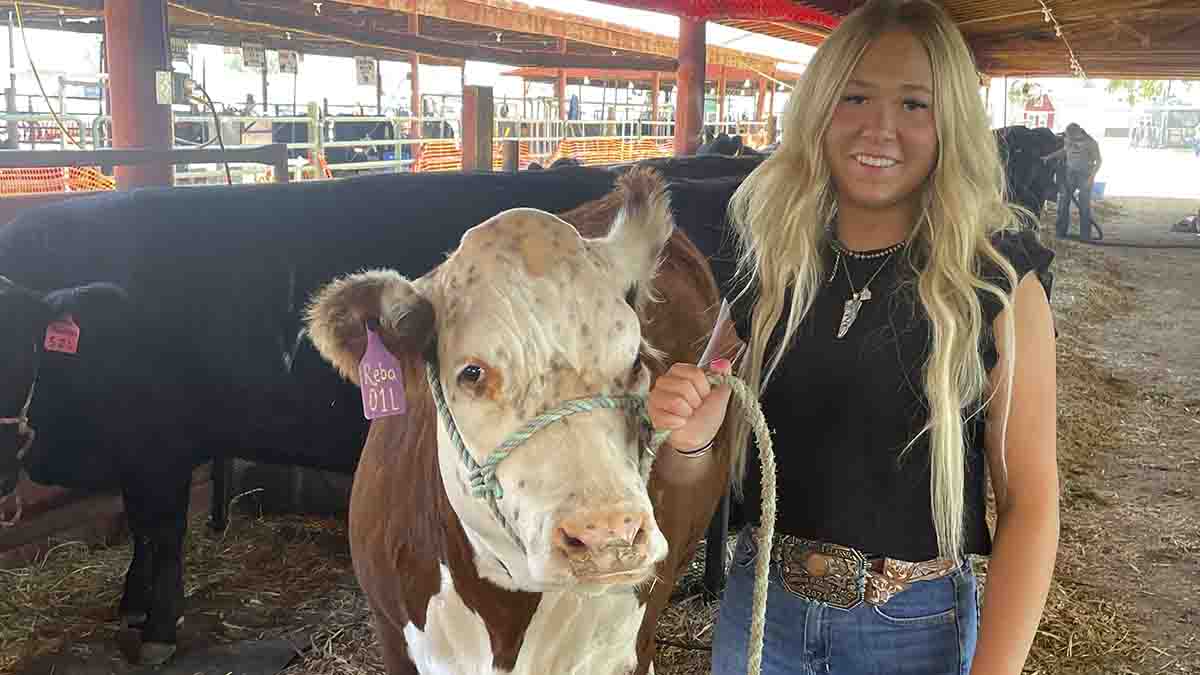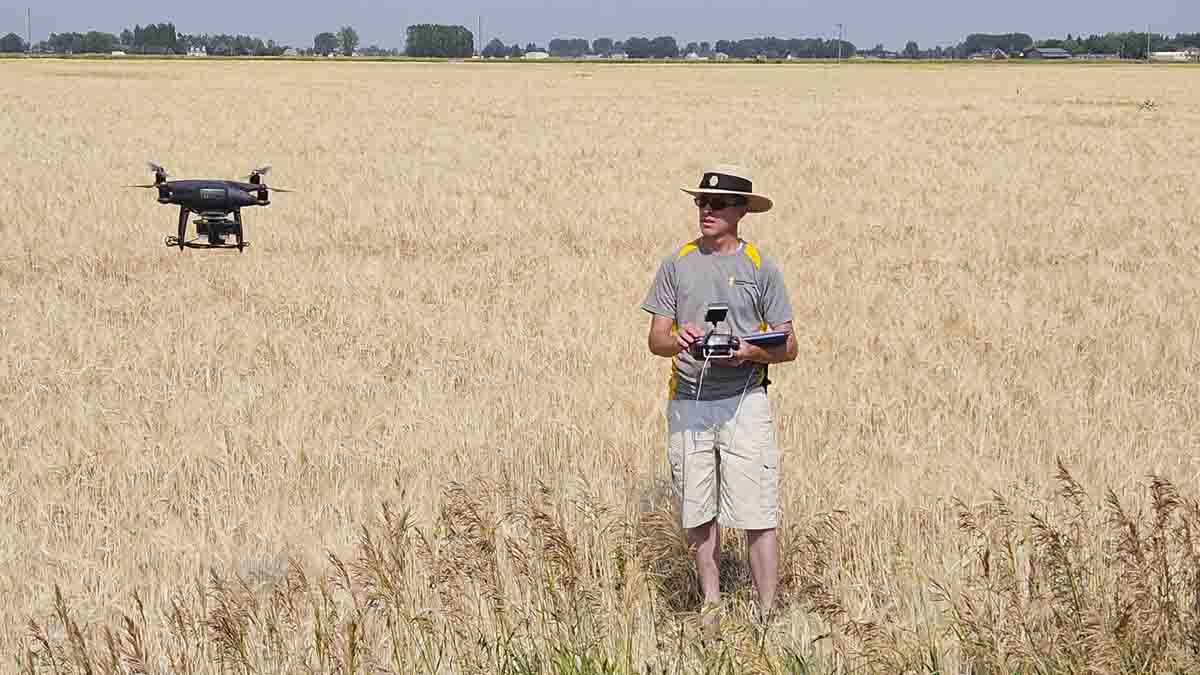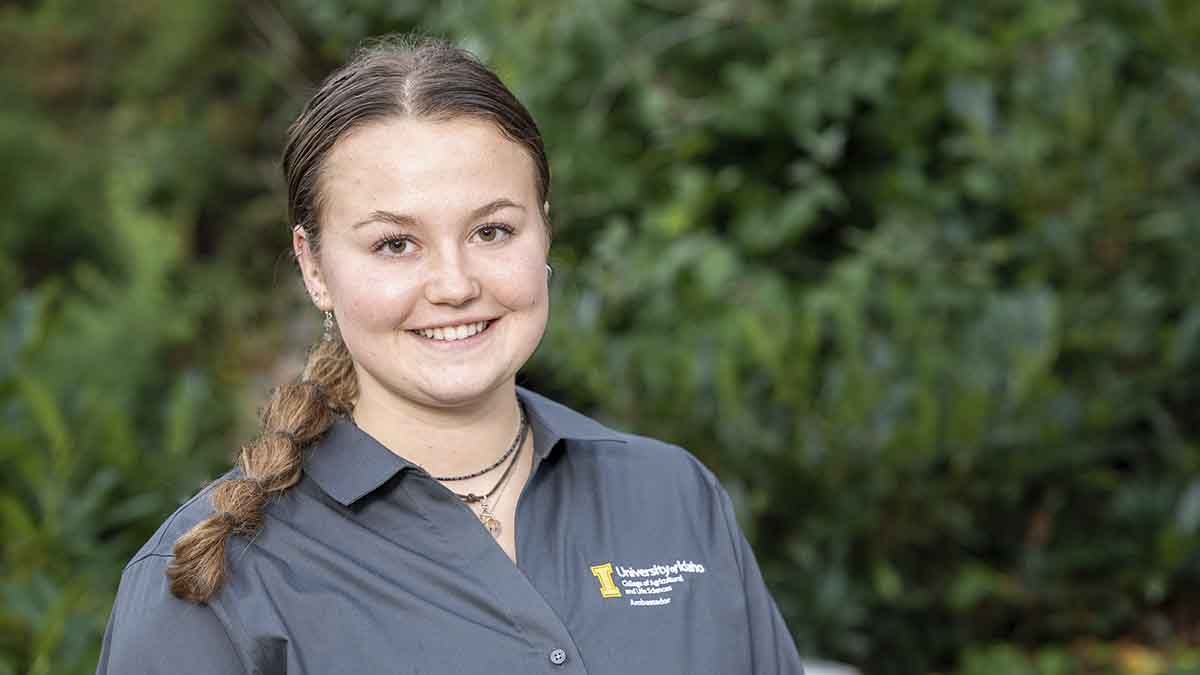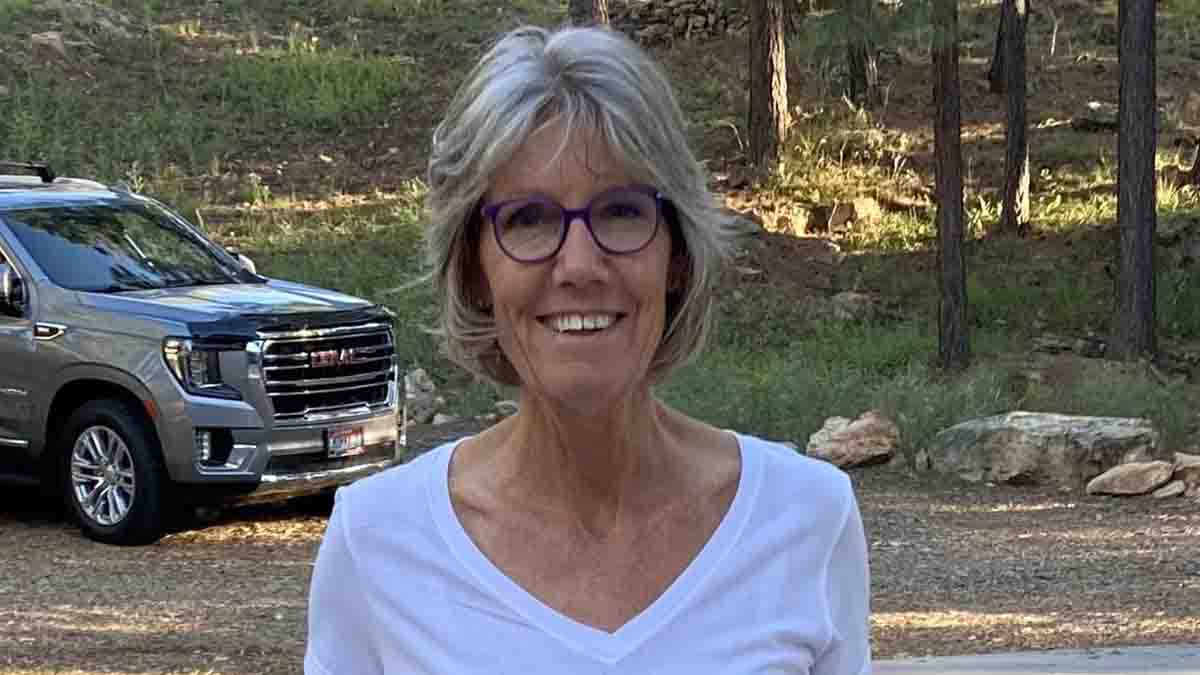Catching Up with CALS — Sept. 4, 2024
Dean's Message — Supporting Students, Growing Enrollment
As we start a new school year, it’s a testament to our college that the students we serve continue to be among our most enthusiastic and vocal champions. Our CALS Ambassadors program, which comprises 27 of our top students, is a case in point. CALS Ambassadors attend recruiting events and conferences and visit high schools to spread the word about the many benefits of being Vandals and joining the CALS family. The program, which is overseen by our director of recruitment and student engagement, Kacie Hoffman, is highly competitive to join — we recently had 43 applicants vie for eight open spots. Being a CALS Ambassador entitles each participant to a small scholarship and makes a fine addition to a resume. But the main driver behind the program’s popularity is that our students are passionate about the opportunities afforded to them through our college, and they want to share the good news with other potential students.
Last fall, CALS reported record enrollment, and the early numbers show we’re on pace to match or slightly build upon that success across departments with this fall’s enrollment. CALS Ambassadors is but one of many creative approaches by our college and our Academic Programs unit contributing to our positive enrollment trends. Academic Programs also includes Matt Doumit, senior associate dean and director; Sharon Murdock, student services manager; and Trevor White, who recently assumed the position of director of retention and student success. White, who previously worked for more than nine years as an academic advisor with our Margaret Ritchie School of Family and Consumer Sciences, has several ideas in the works to get CALS students engaged in student life and to help them tap important resources. White and Doumit plan to revive a former program that was similar to CALS Ambassadors and sought to improve student retention, called Peer Leaders. Our highest achievers will be chosen as Peer Leaders — approachable mentors who will provide direct intervention for peers who are struggling with school. They’ll aid in organizing social events intended to build a sense of community among our student body, including activities directed at the two dormitory floors on campus reserved specifically for CALS students. They’ll also raise awareness about various resources available to help students overcome challenges. We anticipate Peer Leaders will receive a small scholarship for their efforts. The goal is to relaunch Peer Leaders in the fall of 2025.
Furthermore, White will collaborate with the resident advisors of the CALS dormitory floors to post flyers about our programs, services and events. Each month, he plans to bring a different one of the 27 CALS clubs and organizations to the dorm floors to promote student involvement. Before midterms, White will bring refreshments to the dorms to create a fun studying environment. White knocked on doors within CALS dormitory floors and accompanied a group of students to a recent welcome-back event called Dinner with the Dean, where we served our students barbecued beef and introduced them to college leadership. He plans to round up students once again on Sept. 4 for our Welcome Back Picnic, where CALS clubs and organizations will have tables set up for recruiting new members.
CALS faculty and staff are also central to our exceptional student success. Among the staff, Madison Griffin, an administrative specialist within the Department of Agricultural Economics and Rural Sociology, assists with advising, and White will continue advising students in his new role. Faculty maintain an open-door policy, welcoming students to drop by whenever they want to ask questions, seek guidance on coursework or simply to discuss future prospects. Many of our faculty also assume an extra workload and serve as student advisors, which positions them to assist with a thorough understanding of the path that lies ahead for each student. CALS continues to build upon its reputation as a leader in student recruitment and retention, but that success hasn’t happened by accident. We’ve developed an outstanding formula that we continue to improve and refine, and clearly CALS students have taken notice.

Michael P. Parrella
Dean
College of Agricultural and Life Sciences
By the Numbers
University of Idaho and the U.S. Department of Agriculture’s Agricultural Research Service partner on the potato breeding program based in Aberdeen. In 2023, 24,172 potato seed acres planted in the U.S. were varieties that originated from the program, which is equal to 22% of all seed acres planted in the country. The No. 1 variety by acreage was Ranger Russet, at 5,802 planted acres. The breeding program begins with more than 100,000 crosses planted in the 1st-year, single-hill trials. It typically takes 12 to 15 years to produce a variety, with some crosses getting selected as a variety as quickly as 8 years.
Our Stories

PVY Resistant Spud
Despite possessing a suite of intriguing traits, Payette Russet and Castle Russet have been mostly overlooked by the potato industry since the Tri-State Potato Research and Breeding Program (PVMI) released them as new varieties a few years ago.
Though they’ve seldom been planted in commercial fields, a University of Idaho Distinguished Professor and potato virologist, Alexander Karasev, expects both varieties will fill an essential niche toward ensuring a bright future for U.S. potato production.
In March, Karasev and two of his former graduate students, Cassandra Funke and Lisa Tran, published a paper in American Journal of Potato Research, “Screening Three Potato Cultivars for Resistance to Potato Virus Y (PVY) Strains: Broad and Strain-specific Sources of Resistance,” finding Payette appears to have complete immunity to PVY strains. Karasev has begun similar testing on Castle, which contains the same R gene that confers resistance in Payette.
Based on the study’s findings, the two varieties should see broad use as parents within potato breeding programs seeking to overcome PVY, which is one of the most economically important diseases producers currently face.
“The availability of this R gene that was tested and verified gives the breeders a very good tool to move forward with,” Karasev said.
Karasev also sees potential to plant Payette along field borders, where aphids that spread PVY tend to feed first. Aphids lured to the Payette rows would potentially clean their stylets of the disease before moving to feed upon susceptible varieties.
Payette was crossed and selected from the U of I and U.S. Department of Agriculture cooperative breeding program in Aberdeen and released in 2015. Payette is often slow to emerge from dormancy following storage, which is a major reason why it hasn’t been widely planted. Castle is prone to a tuber defect known as hollow heart and also contains undesirable levels of glycoalkaloids — naturally occurring compounds found in Solanaceae family plants that could pose health concerns when consumed in high concentrations.
Potato Variety Management Institute (PVMI), which is a nonprofit corporation that handles licensing and royalty collections of potato varieties developed by a cooperative breeding program involving the states of Idaho, Washington and Oregon, have touted both Payette and Castle for their strong PVY resistance. Observations about the varieties’ PVY performance, however, were based on natural pressure in the field from common virus strains in the growing area.
Karasev and his team exposed Payette to 18 different isolates belonging to 13 unique strains and genetic variants of PVY from throughout the world. He maintains a collection of PVY strains in tobacco plants within a secure greenhouse, where his team conducted the Payette experiment. Sap from the infected tobacco plants was brushed on potato plant foliage.
“We have many strains of the virus that are not found in the U.S. We applied all of that when we tested,” Karasev said. “To my surprise, we could not break that resistance.”
In addition to Payette, he tested two control varieties that are highly susceptible to PVY. For comparison, he also tested two varieties with N-gene resistance, which is the most common type of PVY resistance gene present in commercial varieties. N genes trigger plants’ natural defenses to kill infected cells, but in some cases the virus can spread before infected cells die. As a result, prevalent PVY strains are constantly evolving and shifting toward strains that avoid resistance to specific N genes.
Karasev’s team used three to five individual potato plants to test each combination of potato cultivar and PVY strain, repeating the experiment several times at different times of the year.
The recent paper should provide breeders with surety that the R gene in Payette and Castle will hold up in the face of new PVY strains.
“Finding varieties with extreme resistance is one of the priorities of the breeding program because PVY can have an impact on yield and sometimes quality if the variety is susceptible to virus-related tuber defects,” said Rhett Spear, an assistant professor based at the UI Aberdeen Research and Extension Center specializing in agronomic and economic evaluations of new potato varieties. “A lot of work has been done by Idaho Crop Improvement Association and the seed growers to lower virus levels in the seed, but it’s just about impossible to eradicate it so finding varieties that are resistant is the best option.”
Karasev’s team started initial experiments on Payette Russet in 2018.
The work received some funding from a $5.8M USDA National Institute of Food and Agriculture (NIFA) Specialty Crop Research Initiative (SCRI) grant, called the Potato Virus Initiative, spanning from 2020 through August 2025, award No. 2020-51181-32136. Additional funding was awarded from USDA-NIFA Hatch Projects IDA01560 and IDA01712, USDA-NIFA-SCRI award No. 2014-51181-22373, the Idaho State Department of Agriculture Specialty Crop Block Grant program, Northwest Potato Research Consortium, Idaho Potato Commission and the Idaho Agricultural Experiment Station.

Youth Shines at Fair
Lizzie Murdock, 16, began visiting local businesses about a week before the Bingham County 4-H Fair, hosted Aug. 1-6 at the Eastern Idaho State Fairgrounds.
She’s been active in University of Idaho Extension 4-H Youth Development since she was 7 years old — primarily in animal projects — and she credits the program with shaping her character, work ethic, career interests and financial-management skills. The Snake River High School junior has also grown her college savings account through sales of 4-H show animals.
Prior to the fair, Murdock made stops at about 15 businesses — a local tire shop, a Chevrolet dealership, her uncle’s feed store and several banks to name a few — and invited the proprietors to the county’s 4-H livestock sale, hosted Aug. 7. She told them about the painstaking care she’s invested in her animal project, a heifer calf named Barbie raised in her grandparents’ barn. She explained how she never feeds premixed rations. Rather, she develops her own formula, partnering with her father on the math to pinpoint the optimal blend of protein and nutrients.
Once again, the work has paid off. Barbie placed first in class and eighth overall for market beef. Murdock also finished third overall for senior showman. Knife River Construction bid $3,500 on Barbie at the sale, leaving Murdock roughly $1,500 remaining, after expenses, to deposit into her college savings.
Murdock also showed two other heifers at the fair — Reba and Shakira — which she plans to keep for breeding calves for future projects.
“I really like getting to meet new people and just the drive that it’s given me to work hard and do things on my own and how to manage my own money,” Murdock said. “It’s fun to get out and show off this animal you’ve been working on all year.”
In addition to showing her own animals, Murdock has a client who pays her about $800 each season to aid him with fitting and showing Angus cows at the Eastern Idaho State Fair, scheduled for Aug. 30 through Sept. 7 in Blackfoot. Fitting entails washing and grooming bovines, including using a spray adhesive to fluff their legs, hindquarters and tail head. Murdock has traveled as far as Illinois to attend clipping clinics to perfect her livestock grooming and fitting skills. She has a knack for it, having grown up watching her mother, Tami, who is a professional beautician, cut and style human hair.
“I grew up watching what she did, so it was natural for me,” Murdock said.
Both of her parents also showed 4-H animals as children, and her father, Kory, financed much of his college education by selling 4-H beef cattle.
Murdock has a strong affinity for the UI Extension educators who have helped her hone her craft throughout the years. Based largely on positive interactions with Extension professionals, Murdock plans to pursue a career in agriculture, and her dream job is to become an Extension educator. More specifically, she hopes to be just like Meranda Small, who was Murdock’s first 4-H Extension educator in Bingham County.
“Meranda really inspired me to want to do that career,” Murdock said. “She really got to know the kids in our county and overall really helped me and was super kind to everybody. I really love 4-H and I want to be able to do it in my life and be able to help these kids.”
Murdock has also been involved in horse 4-H projects and is active in high school rodeo, competing in barrel racing and pole bending.
UI Extension 4-H Youth Development offers year-round programming in every Idaho county to youth ages 8 to 18, empowering them to reach their full potential by working and learning in partnership with caring adults. The Cloverbuds program is designed for younger children, ages 5-7. Idaho 4-H started in 1912 and serves tens of thousands of Idaho youth through community clubs, afterschool programs, day camps, summer camps, conferences and international exchange programs. Research shows 4-H members in Idaho take fewer risks such as drug or alcohol use, are more apt to engage in service to help others, assume school and community leadership roles and are more likely to speak with parents or guardians about important issues.

Water-use Efficiency Study
University of Idaho researchers have been flying drones fitted with near-infrared cameras over eastern Idaho wheat and barley research plots to assess how efficiently different varieties use water.
Jared Gibbons and Lance Hansen, both UI Extension educators based in Madison County, earned a drone pilot’s license and recorded images over university cereal variety trials in Aberdeen, Idaho Falls and Tetonia from early June through late July, making at least three flights above each site.
“Are certain varieties of barley or wheat more efficient at using water than others? There really wasn’t anything that had been done to look at that across varieties, and it’s a tricky thing to measure because you’re talking about a very narrow band of how effective they are with water,” Gibbons said.
Gibbons came up with the idea as a means of finding uses for several small drones and a few larger drones his county office obtained for a program that teaches 4-H youth about drone technology. The project was funded with about $6,000 in Innovative Project Grant dollars through UI Extension. The cameras cost roughly $500 each and are about the size of a wallet.
“Those drones are capable of doing other things and I thought, ‘We’ve already got the drones. Let’s get more use out of them,’” Gibbons said.
Gibbons plans to review the data this fall. If he discovers statistically significant differences in water-use efficiency among varieties, he’ll share the information at cereal field days and include the data in an informational booklet about cereal varieties.
Healthy plants absorb most of the red light that’s visible to the human eye for use in photosynthesis and reflect near-infrared light, which isn’t part of the visible spectrum. As plants become stressed due to factors such as inadequate water, the balance shifts somewhat and they begin absorbing some near-infrared light.
Based on the reflection of near-infrared light, his software assigns a score ranging from -1 for dead plants or bare soil to 1 for perfectly healthy plants. Trial plots should work well for the experiment, given that they all receive the same amount of water, fertilizer and other inputs and are grown in replication in a common environment.
Gibbons plans to repeat the experiment next season if he generates conclusive data.
“I’m interested in doing this in dryland trials,” Gibbons said. “I think there’s potential to see more difference in the sites that are not irrigated.”
He also plans to evaluate how certain management practices affect water utilization, as well as the amount of water required for plants to convert certain forms of nitrogen into growth.
Furthermore, he’s already used the drones and cameras to aid colleagues’ research, including a project evaluating annual alfalfa as a means of fixing additional nitrogen and a project evaluating herbicide effectiveness.
“Now that I’ve got the cameras that’s a one-time cost and I can keep using them for other projects within the district,” Gibbons said.
Faces and Places
Ava Eckles, of Twin Falls, has earned the Jackman Scholarship from Phi Upsilon Omicron Educational Foundation, which is a national honor society recognizing and encouraging achieved excellence in scholarship, leadership and service for family and consumer sciences students. Eckles is majoring in nutrition sciences within the Margaret Ritchie School of Family and Consumer Sciences.
Chelsey Lewallen and Lori Wahl, instructors with the apparel, textiles and design program in the Margaret Ritchie School of Family and Consumer Sciences, hosted several summer workshops as part of the Idaho 4-H State Teen Association Conference and Summer Design Days. Workshops focused on plant and flower smash printing, felting, laser cutting and zero waste garment construction.
Theresa Albright, business specialist at the Kimberly Research and Extension Center, retired Aug. 30 after nearly 23 years of service to the University of Idaho.



Events
- Sept. 4 — CALS Welcome Back Picnic, Moscow
- Sept. 10, 24 — Idaho Home Garden Tips Class, Online
- Sept. 12 — Freeze Drying Done Right, Online
- Sept. 12 — Introducing the Master Melittologist Program/Surveying Idaho for Native Bees, Nampa
- Sept. 12 — Build and Grow Your e-Business Course, Digital Economy Program, Online
- Sept. 24-Nov. 19 — Get the Dish - A Virtual Cooking Series, Online
- Oct. 4 — CALS Days, Moscow
- Oct. 8 — CALS Networking Night, Moscow
View calendar for upcoming field days (submit your field days)












